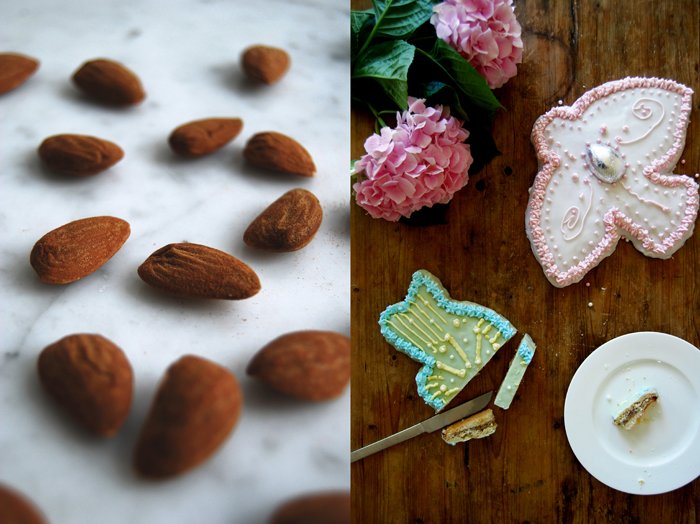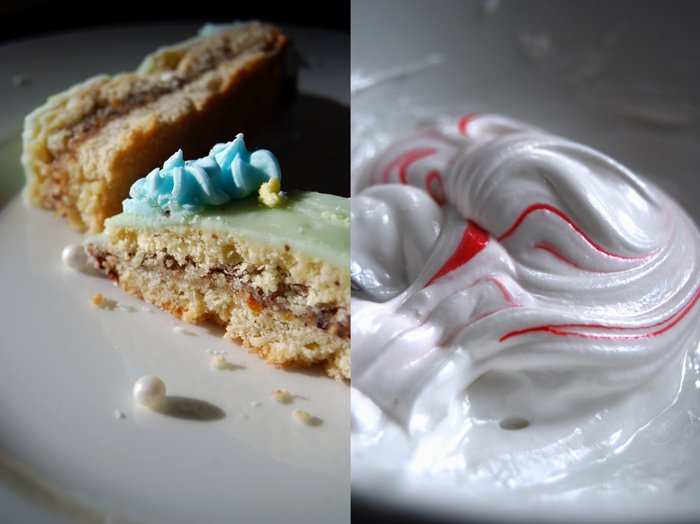Traditional Maltese Easter Figolli
There are three cultures which have a big influence on my life, the German which I grew up with and the Maltese and the American through my boyfriend and his family. Our life is a daily mix of different traditions, habits, mentalities and languages, this is a gift to me but it also brings a lot of potential to create friction. The German and the Maltese background especially couldn't be more different. My Northern European mind, focussing on logic and order, black and white thinking, clashes sometimes (often) with the Mediterranean mentality, its relaxed trust in life, its chilled out pace, its emotional and sometimes dramatic approach to conflicts of any kind. It can be frustrating, for both sides, but it has made our lives so much richer! It's a challenge, testing out how much one is willing to accept that we are all different. I want to stay open for this experience which involves so much love from and for so many people and on top it is so much fun and entertainment and there's plenty of that! When I'm together with my Maltese family, after all theses years we're still confronted with cultural misunderstandings that bring us to tears as we have to laugh so hard. When my German seriousness clashes with Mediterranean humour, the potential for comic situations is practically never ending!
The cakes and pictures in my posts from yesterday and today couldn't reflect the two cultures and differences in a better way. Yesterday's eggnog sponge cake with whipped cream, its clean and minimal look, the concentrated focus on the pure taste of German eggnog meets today's Maltese figolla which is opulent and dramatic, lusciously and colourfully decorated. It's stuffed with various exotic flavours like orange, cinnamon and almonds. Two cultures packed in two cakes!
Figolli is the plural for figolla coming from the Latin word figura, it's a famous traditional treat eaten on Easter Sunday in Malta. To me, it's a bit like a big cookieish cake although every Maltese would disagree with that. Originally it was made in the shape of a woman, a man, a fish or a basket, ancient symbols of fertility like the chocolate egg which is always placed on top of each figolla. Without the egg (which is actually cut in half) it's not an original figolla! Times changed and more shapes became popular such as lambs, hearts, stars and a few other Easter related figures. I was given a fish and a bird by my mother in law and to be honest I was happy about her choice as the dough extends quite a bit while it's baking. I have my doubts that, if she had given me a lamb, there would have been any association left with this animal.
The decoration of a figolla is very important and involves lots of colourful sugar coating and icing. The pastry itself is made of a short crust like dough, sandwiched and filled with almond paste. There are lots of different recipes, my Maltese family gave me about six to prepare me for this experience. I was very thankful for this support but in the end I took a bit of each and added and changed after my own taste. The almond paste for example had to be exchanged with a hazelnut paste with a hint of almonds enhanced with orange zest and cinnamon. When it came to decorating the figolla I was happy to have my assisting sister in law Julia at my side to give me stylistic instructions. That's what she does when she makes figolli in Malta together with one of her aunts.
When I wrote about my rhubarb meringue tartlets last week I had mentioned that I'm not the best decorator when it comes to pastry. After we managed to put around 1kg (2 pounds) of icing sugar in both the lemony sugar glaze and in the royal icing which is made with egg whites and used for the icing decoration, we were equipped with two thick pastes and food colouring, we were ready to start! I was prepared that decorating a figolla would be very difficult, maybe stressful but I was mistaken. It was fun and I can admit that we were quite impressed with the results. I was an inexperienced German beginner after all but thanks to our North-South European cooperation we were rewarded with two beautiful and delicious figolli!
I wish you a Happy Easter!
Traditional Maltese Figolli
You need figolli cutters with a high rim.
For two big figolli (around 30cm x 20cm / 12" x 8") you need
For the dough
plain flour 400g / 14 ounces
granulated sugar 200g / 7 ounces
a pinch of salt
zest of 1 lemon
a pinch of fresh vanilla
butter 200g / 7 ounces
organic eggs 2
Combine the flour with the sugar, lemon zest, vanilla and salt. Cut the butter with a knife into the flour until there are just little pieces of butter left. Continue with your fingers and work the butter into the flour until combined (there shouldn’t be any lumps of butter left). Add the eggs and continue mixing with the hooks of your mixer until combined, the dough will be a bit sticky and soft. Form a flat ball, wrap in cling film and put in the fridge for at least 1 hour.
For the hazelnut/ almond paste
hazelnuts, ground 90g / 3 ounces
almonds, ground 60g / 2 ounces (you can also use just 150g of almonds or just hazelnuts if you prefer)
granulated sugar 100g / 3.5 ounces
ground cinnamon 1/2 teaspoon
zest of 1 orange
juice of 1/2 orange
organic egg whites 2
Combine the dry ingredients and add the orange juice. In a separate bowl, mix the egg whites until stiff, add the hazelnut-almond mixture and mix to a thick paste.
For the figolli
Set the oven to 180°C/ 355°F (fan-assisted oven) and line 2 baking sheets with parchment paper.
Divide the dough into 4 pieces, roll each one out between cling film (about 3/4 cm / 1/3" thick) and cut out 2 equal figures for each figolla. Place one pastry figure on the baking sheet (this works best when you put the parchment paper on top of a rolled out figure, flip it and put it back on the baking sheet). Spread half the hazelnut paste on top and cover gently with the corresponding figure. Continue with the second figolla and bake for 25 minutes in the oven or until golden brown. Let them cool completely.
For the decoration
For the sugar glaze
icing sugar, sieved, around 400g / 14 ounces
lemon juice 2 tablespoons
water 3 tablespoons, you might need less
food colouring
Mix the icing sugar with the lemon juice and add the water, one tablespoon at a time until you have a thick and slightly runny paste (you may not need all of the water), if it's too liquid it won't stay on the figolla. Add food colouring after your own taste.
For the royal icing
organic egg whites 3
icing sugar, sieved about 600 g / 21 ounces
food colouring
Lightly whisk the egg whites, add the icing sugar a little at a time and continue beating. Stop adding more sugar when you have a very thick and stiff paste. To check the texture, fill a piping bag and press out a little drop, if it stays in shape, the icing is done. Add food colouring after your own taste.
Spread the sugar glaze on top of the figolla and let it dry for a couple minutes. When the glaze is hard, fill a piping bag and decorate with the royal icing. By experience I can say, be brave and it will look much better!







